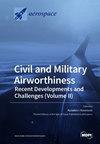飞行模拟中阵风空气动力学的时域计算方法
IF 2.1
3区 工程技术
Q2 ENGINEERING, AEROSPACE
引用次数: 0
摘要
阵风对飞机有重大影响,需要通过飞行模拟进行分析。在这一过程中,时域阵风空气动力的解决方案至关重要。随着在阵风环境下进行飞行模拟的需求不断增加,传统的阵风空气动力学相关方法无法兼顾计算精度和效率。因此需要一种能快速、准确计算时域阵风气动力的方法。本研究提出了一种适合实时飞行模拟的阵风气动力求解方法--拟合条带法。它只需要当前和之前的阵风信息即可计算气动力,适用于不同构型的飞机和不同种类的阵风。首先,拟合条带法需要划分拟合条带并计算校准条件下的气动力。本研究采用双晶格法和计算流体力学计算条带的气动力。然后,通过拟合计算获得振幅系数和时延系数。最后,将系数和阵风信息输入公式,计算出阵风空气动力。以一个后掠翼为例进行了验证,证明了计算结果与亚音速和跨音速实验数据之间的一致性,从而证明了拟合条带法在离散阵风和连续阵风中的准确性。与其他方法相比,拟合条带法所用时间最短。此外,正常布局飞机的计算结果表明,该方法避免了有理函数近似法的缺点,比阵风分组法更精确。同时,还对大纵横比飞机进行了阵风气动力计算,并用于实时飞行模拟。本文章由计算机程序翻译,如有差异,请以英文原文为准。
A Time-Domain Calculation Method for Gust Aerodynamics in Flight Simulation
Gusts have a significant impact on aircraft and need to be analyzed through flight simulations. The solution for time-domain gust aerodynamic forces stands as a pivotal stage in this process. With the increasing demand for flight simulations within gusty environments, traditional methods related to gust aerodynamics cannot fail to balance computational accuracy and efficiency. A method that can be used to quickly and accurately calculate the time-domain gust aerodynamic force is needed. This study proposes the fitting strip method, a gust aerodynamic force solution method that is suitable for real-time flight simulations. It only requires the current and previous gust information to calculate the aerodynamic force and is suitable for different configurations of aircraft and different kinds of gusts. Firstly, the fitting strip method requires the division of fitting strips and the calculation of the aerodynamic force under calibration conditions. In this study, the double-lattice method and computational fluid dynamics are used to calculate the aerodynamic force of the strips. Then, the amplitude coefficients and time-delay coefficients are obtained through a fitting calculation. Finally, the coefficients and gust information are put into the formula to calculate the gust aerodynamic force. An example of a swept wing is used for validation, demonstrating congruence between the computational results and experimental data across subsonic and transonic speeds, which proves the accuracy of the fitting strip method in both discrete gusts and continuous gusts. Compared with other methods, the fitting strip method uses the shortest time. Furthermore, the results of a calculation for normal-layout aircraft show that this method avoids the shortcomings of the rational function approximation method and is more accurate than the gust grouping method. Concurrently, gust aerodynamic force calculations were performed on aircraft with large aspect ratios and used in a real-time flight simulation.
求助全文
通过发布文献求助,成功后即可免费获取论文全文。
去求助
来源期刊

Aerospace
ENGINEERING, AEROSPACE-
CiteScore
3.40
自引率
23.10%
发文量
661
审稿时长
6 weeks
期刊介绍:
Aerospace is a multidisciplinary science inviting submissions on, but not limited to, the following subject areas: aerodynamics computational fluid dynamics fluid-structure interaction flight mechanics plasmas research instrumentation test facilities environment material science structural analysis thermophysics and heat transfer thermal-structure interaction aeroacoustics optics electromagnetism and radar propulsion power generation and conversion fuels and propellants combustion multidisciplinary design optimization software engineering data analysis signal and image processing artificial intelligence aerospace vehicles'' operation, control and maintenance risk and reliability human factors human-automation interaction airline operations and management air traffic management airport design meteorology space exploration multi-physics interaction.
 求助内容:
求助内容: 应助结果提醒方式:
应助结果提醒方式:


